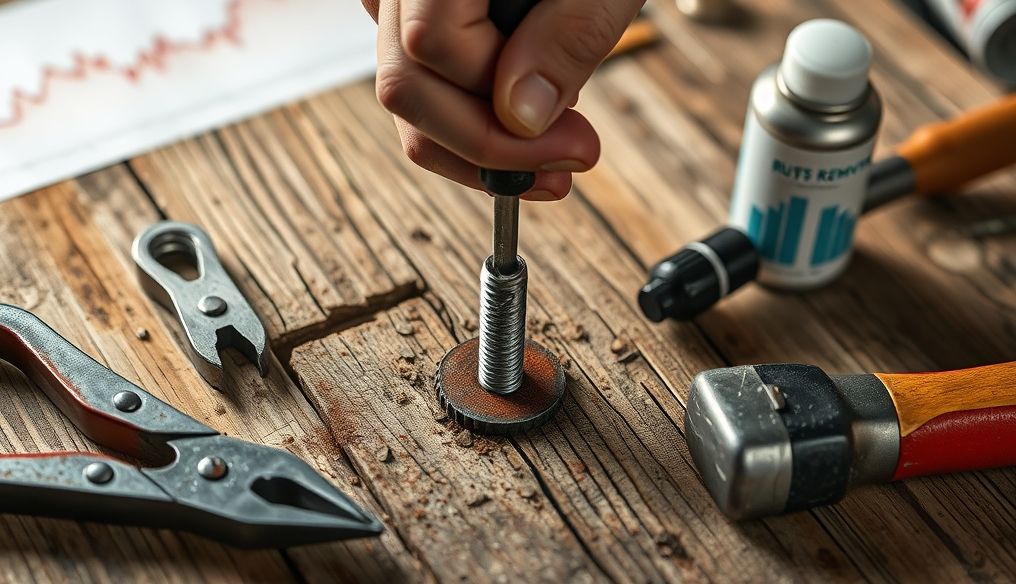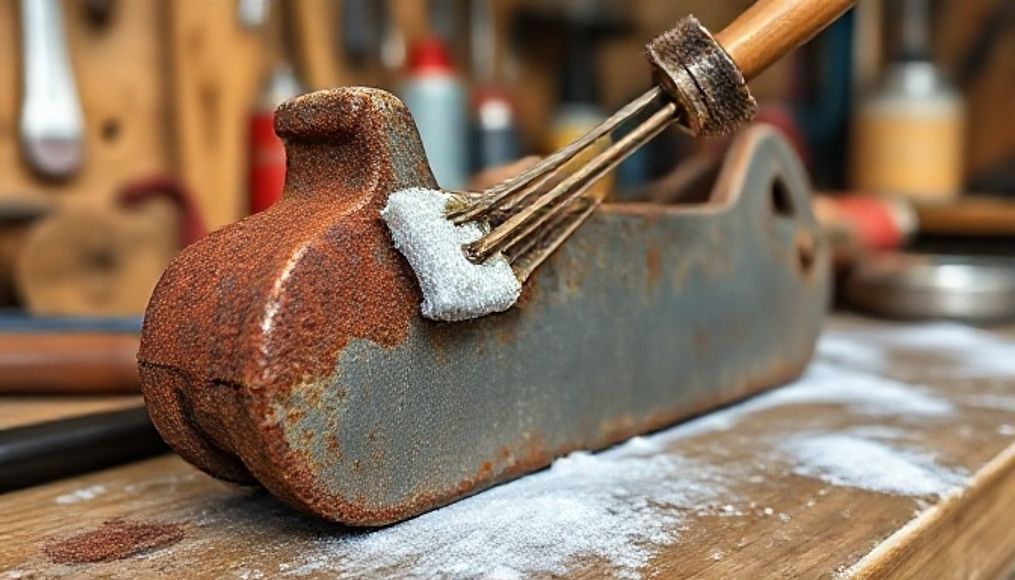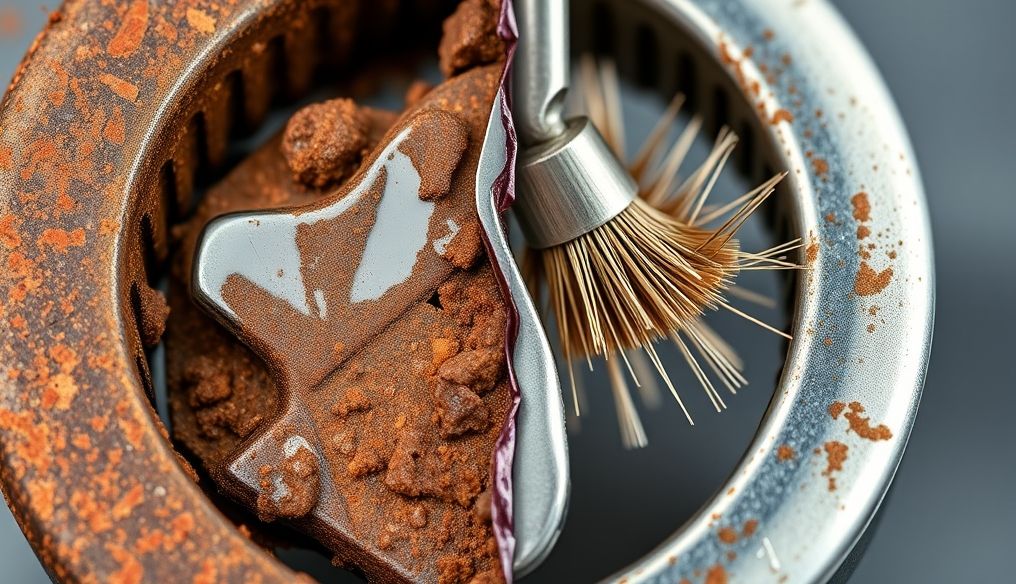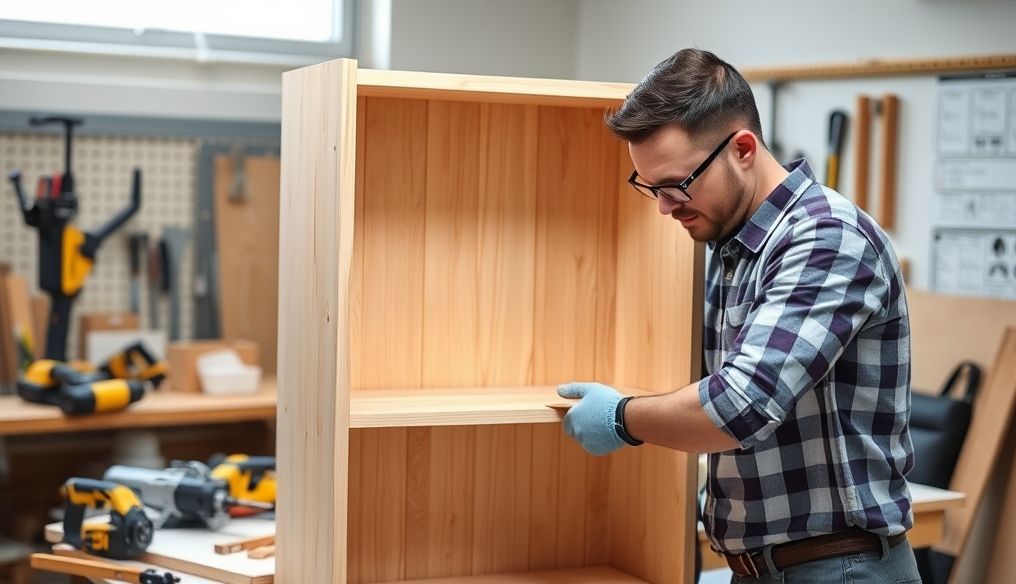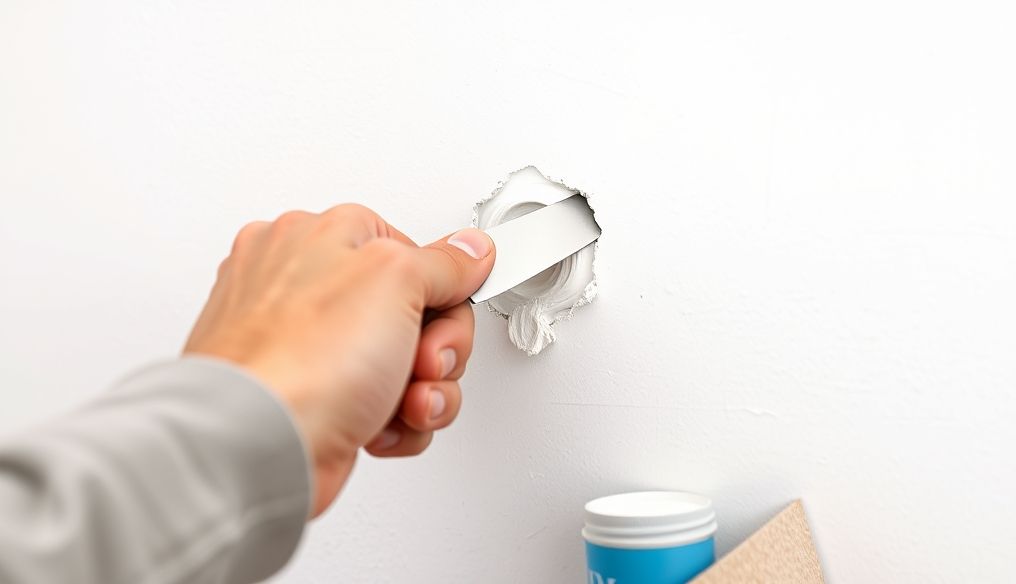Introduction: Why Screws Become Stubborn
Screws, those small fasteners that hold different parts together, can sometimes turn into a real nightmare. So what makes them so stubborn? There are several possible reasons:
- Rust and Corrosion: Humidity and oxygen are the screws' worst enemies. They cause rust to form, which sticks to the screw and secures it in place.
- Paint and Coating: Paint or coating may seep into the screw head and threads, causing it to adhere to the surrounding surface.
- Overtightening: Tightening the screw with excessive force can damage the threads or even break the screw itself.
- Dirt and Debris: Dirt and debris can accumulate inside the screw head and threads, hindering its movement.
- Damaged Screw Head: Using an inappropriate or worn screwdriver can damage the screw head, making it difficult to grip and rotate.
Chapter 1: Essential Tools for Removing Stubborn Screws
Before you start trying to remove the stubborn screw, make sure you have the right tools. Here is a list of essential tools that should be available to you:
- Appropriate Screwdriver: Choose a screwdriver that fits perfectly with the type and size of the screw head. Using an inappropriate screwdriver can damage the screw head.
- Pliers: Pliers can be used to grip the screw head and rotate it if the screwdriver is unable to do so.
- Hammer: A hammer can be used to gently tap the screwdriver to create a shock that helps release the screw.
- Rust Remover Spray: Rust remover spray helps to loosen rust and corrosion, making it easier to remove the screw.
- Lubricant: A lubricant such as lubricating oil or silicone grease can be used to lubricate the screw and facilitate its movement.
- Heat Gun or Hair Dryer: A heat gun or hair dryer can be used to heat the screw, which helps to expand the metal and relieve pressure.
- Rubber Bands or Hair Ties: A rubber band or hair tie can be placed between the screw head and the screwdriver to increase friction and prevent the screwdriver from slipping.
Chapter 2: Simple and Effective Methods for Removing Stubborn Screws
Now that you have gathered the necessary tools, here are some simple and effective methods you can try to remove the stubborn screw:
- Use an Appropriate Screwdriver: Make sure you are using a screwdriver that fits perfectly with the type and size of the screw head. Press firmly and steadily on the screwdriver while rotating it.
- Try the Press and Rotate Method: Press firmly on the screwdriver and rotate it slowly and steadily. You may need to repeat this process several times before the screw moves.
- Use Rust Remover Spray: Spray rust remover spray on the screw head and threads and let it sit for a few minutes to penetrate. Then try removing the screw again.
- Use Lubricant: Apply a lubricant such as lubricating oil or silicone grease to the screw head and threads and let it sit for a few minutes to penetrate. Then try removing the screw again.
- Use the Hammer: Place the screwdriver on the screw head and gently tap it with the hammer. This may help release the screw.
- Use a Heat Gun or Hair Dryer: Heat the screw using a heat gun or hair dryer. This may help to expand the metal and relieve pressure.
- Use a Rubber Band or Hair Tie: Place a rubber band or hair tie between the screw head and the screwdriver to increase friction and prevent the screwdriver from slipping.
Chapter 3: Advanced Techniques for Removing Stubborn Screws
If the simple methods don't work, you may need to try some advanced techniques:
- Using a Damaged Screw Extractor: A damaged screw extractor is a tool specifically designed to remove screws with damaged heads.
- Using a Drill: If the screw is completely stuck, you can use a drill to drill out the screw head.
- Using an Impact Wrench: An impact wrench is a powerful tool used to remove stubborn screws.
- Welding: In some cases, it may be necessary to weld a piece of metal onto the screw head to provide a better grip.
Chapter 4: Dealing with Different Types of Stubborn Screws
The methods for dealing with stubborn screws vary depending on their type:
- Rusty Screws: Use rust remover spray and lubricant. You may also need to use a hammer or heat gun.
- Painted Screws: Try removing the paint with a scraper or knife before attempting to remove the screw.
- Damaged Screws: Use a damaged screw extractor or drill.
- Small Screws: Use a precision screwdriver or magnifying glasses for better visibility.
Chapter 5: Tips to Prevent Screws from Becoming Stubborn
Prevention is better than cure. Here are some tips to prevent screws from becoming stubborn in the first place:
- Use High-Quality Screws: Screws made of high-quality materials are less prone to rust and corrosion.
- Lubricate Screws Before Tightening: Apply lubricant to screws before tightening them to make them easier to remove in the future.
- Do Not Overtighten Screws: Tightening screws with excessive force can damage the threads.
- Clean Screws Regularly: Clean screws regularly to remove dirt and debris.
- Store Screws in a Dry Place: Store screws in a dry place to prevent rust and corrosion.
Chapter 6: Safety First: Important Precautions When Removing Screws
Removing stubborn screws can be dangerous if you don't take the necessary precautions:
- Wear Safety Glasses: Wear safety glasses to protect your eyes from flying debris.
- Wear Gloves: Wear gloves to protect your hands from cuts.
- Use the Right Tools: Use the right tools to avoid injuries.
- Be Careful When Using the Hammer: Be careful when using the hammer to avoid hitting yourself.
- Do Not Use Excessive Force: Do not use excessive force to avoid breaking the screw or damaging the surrounding surface.
Chapter 7: Alternatives to Stubborn Screws: Is it Time to Replace?
Sometimes, it may be better to replace the stubborn screw instead of trying to remove it, especially if the screw is severely damaged or if it is difficult to reach. Replacing the screw ensures a safe and reliable solution.
Chapter 8: Frequently Asked Questions About Removing Stubborn Screws
- Q: What do I do if the screw head breaks off? You can use a damaged screw extractor or a drill.
- Q: What do I do if the screw is stuck in a tight space? You can use a short screwdriver or a small wrench.
- Q: Can I use cooking oil as a lubricant? No, cooking oil is not ideal as a lubricant because it may attract dirt and debris.
- Q: What is the best rust remover spray? There are many good rust remover sprays available on the market. Choose a product that has good reviews and an effective formula.
We hope this comprehensive guide has helped you remove stubborn screws easily and safely. Always remember that patience and the right techniques are the key to success!
